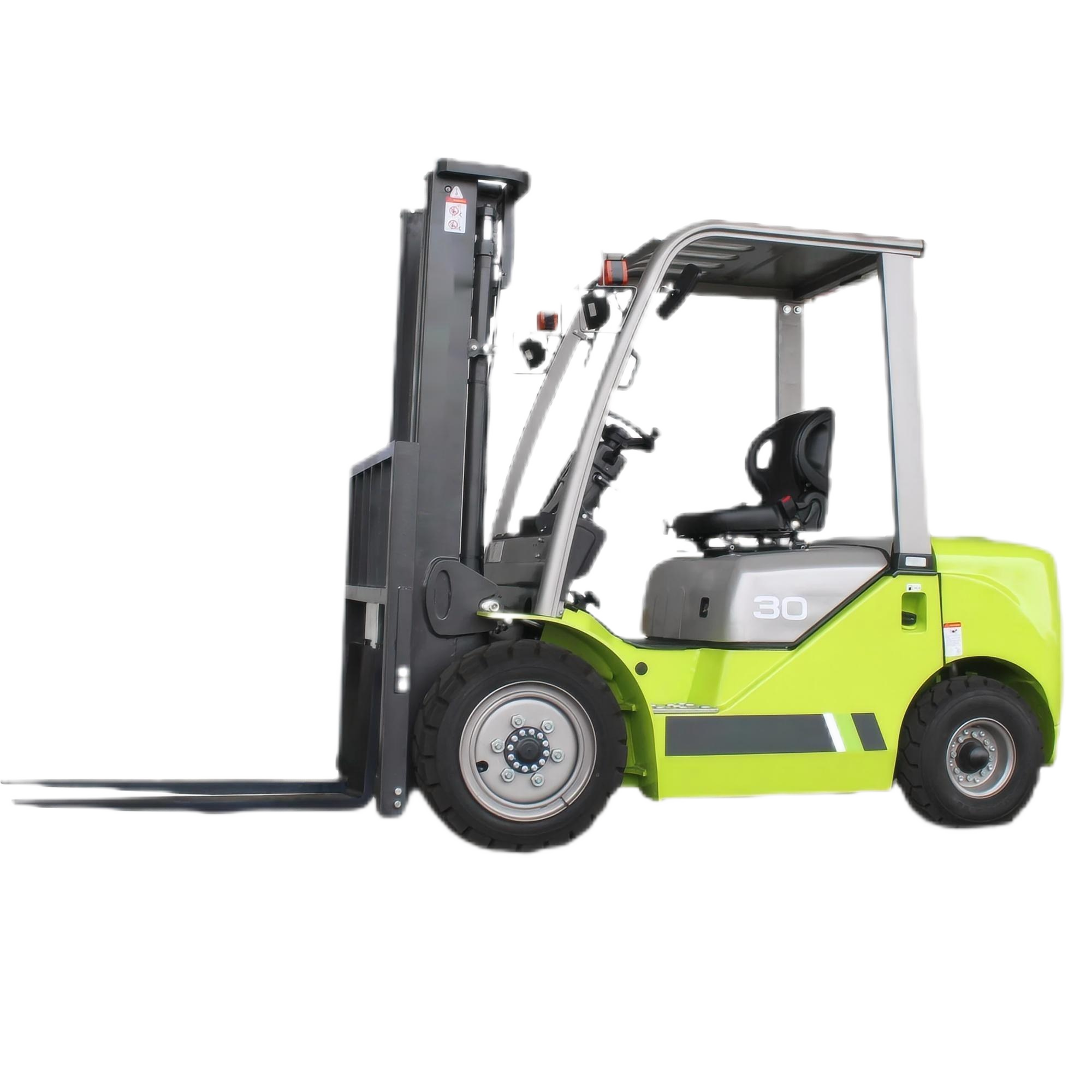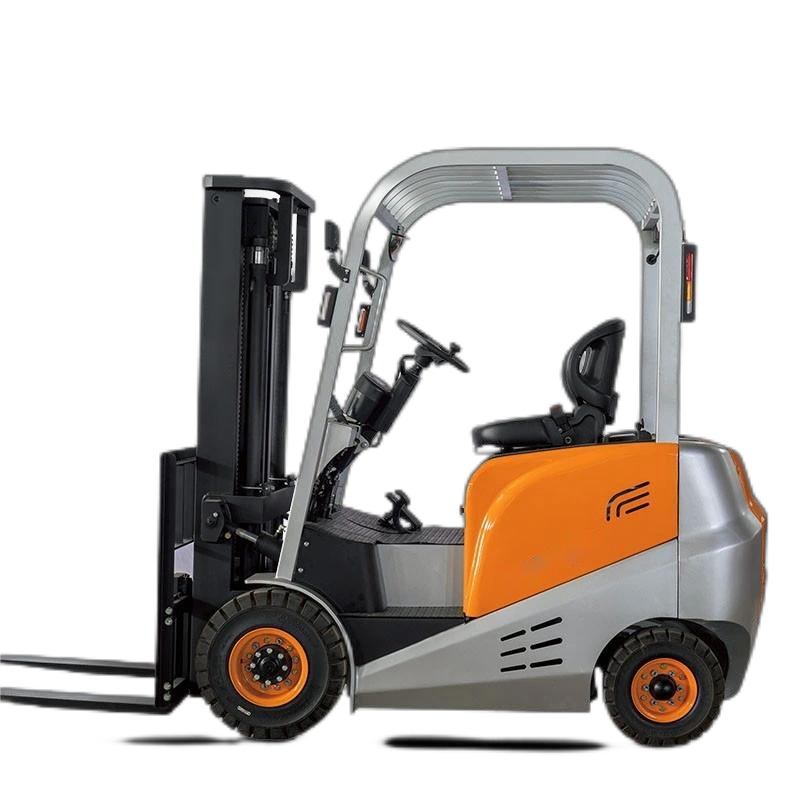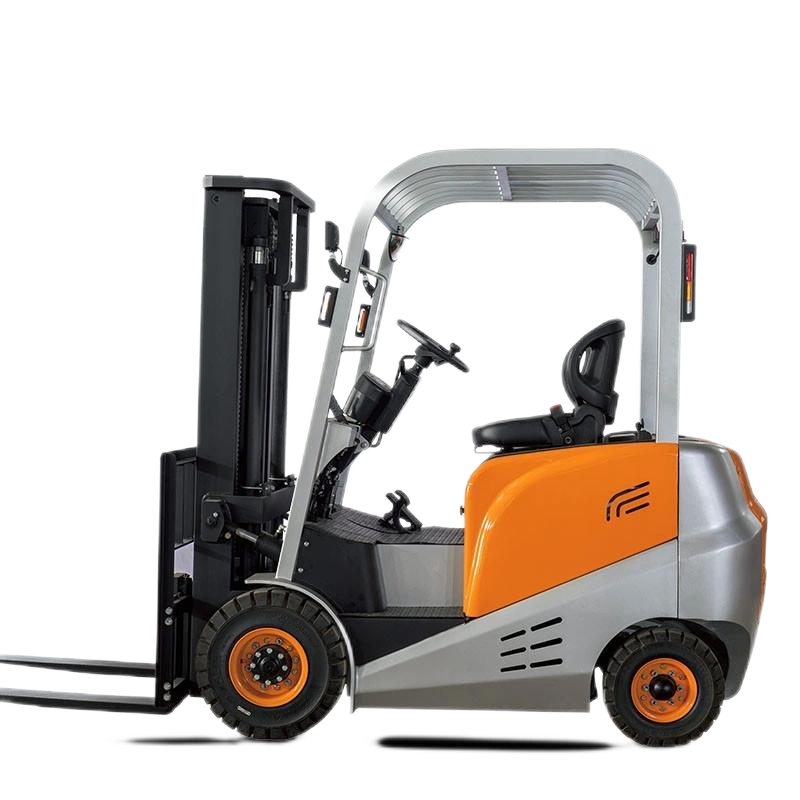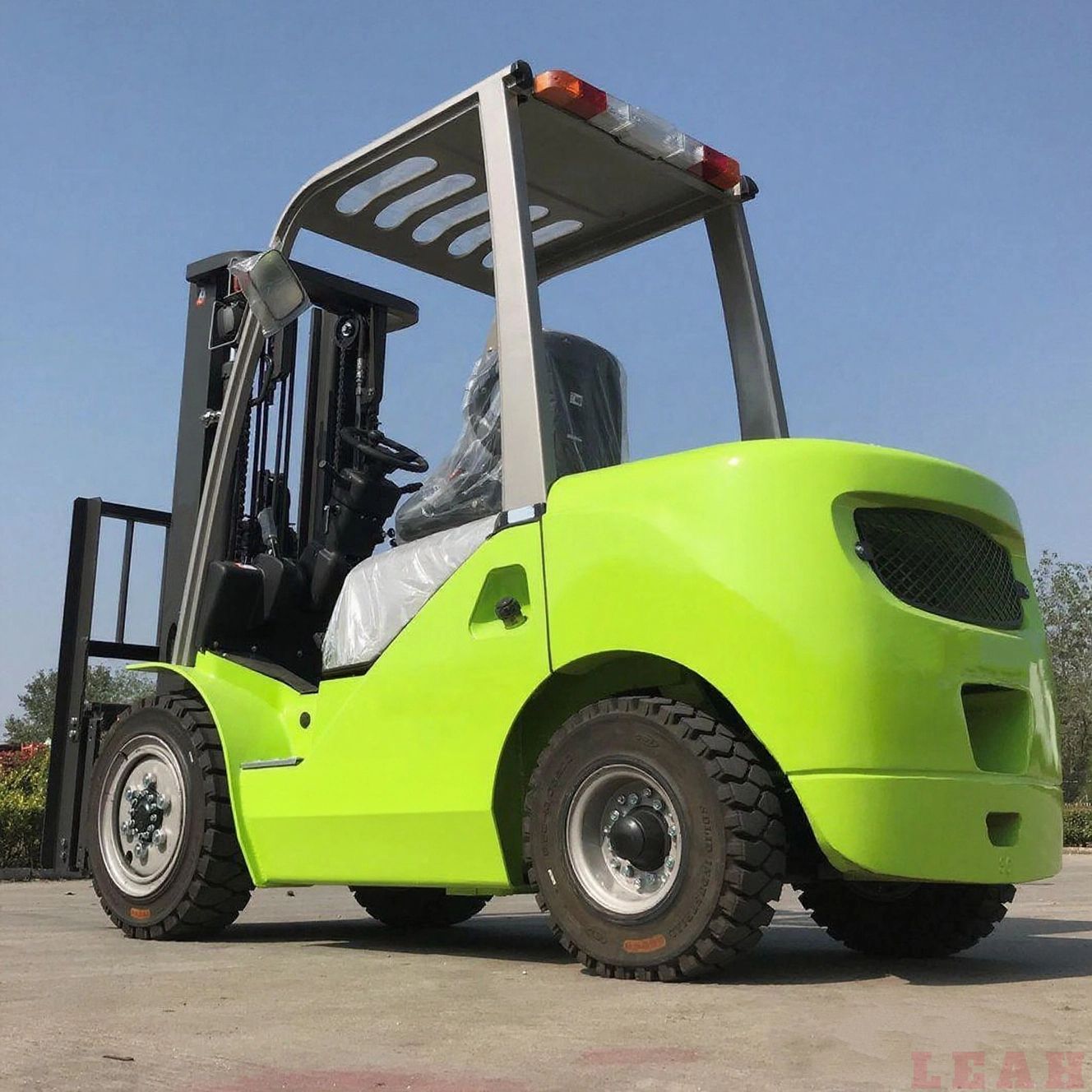Charging of Electric Forklifts
Charging is a core process for ensuring the endurance of electric forklifts and extending battery life, which must strictly adhere to the three principles of "safety standards, scientific operation, and regular maintenance". The following details the key points of the entire electric forklift charging process from 5 dimensions: pre-charging preparation, in-charging operation, post-charging handling, common issues, and battery maintenance.
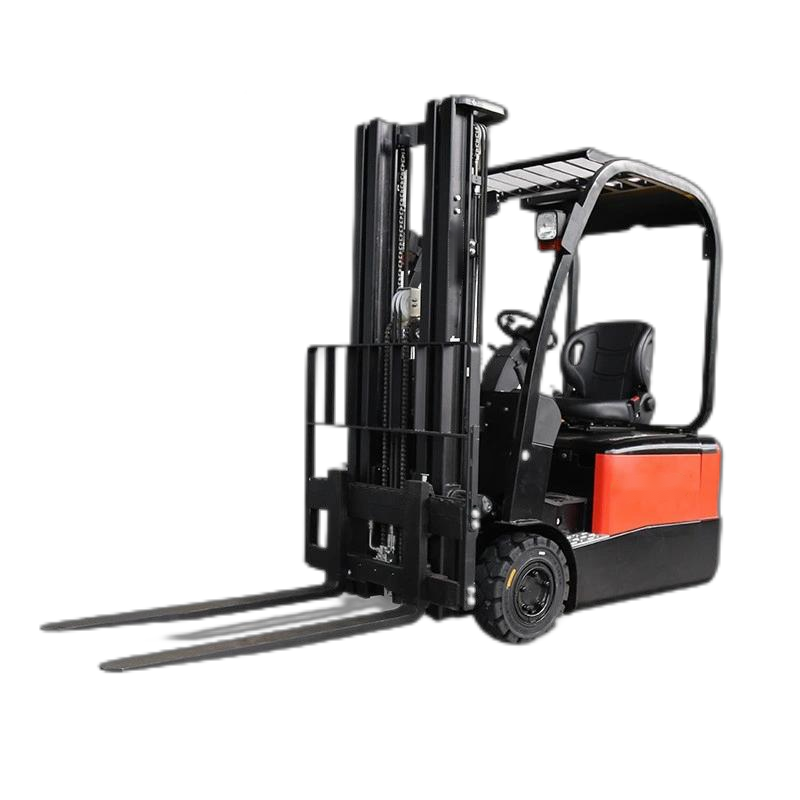
I. Pre-Charging: 3 Core Preparation Tasks
Inspection before charging is crucial to prevent safety accidents and battery damage. The following items must be confirmed one by one:
1. Environment Inspection
- The charging area must be independent and well-ventilated (to avoid hydrogen accumulation in enclosed spaces, as hydrogen is prone to explosion when exposed to sparks), with the temperature controlled between 10-30°C (low temperatures reduce charging efficiency, while high temperatures may cause battery bulging).
- Storing flammable and explosive materials (such as gasoline and alcohol) in the area is prohibited. The area must be equipped with at least 2 dry powder fire extinguishers (4kg each) (dry powder or carbon dioxide fire extinguishers should be used for battery fires; never use water).
- An insulating mat must be laid on the ground (to prevent electric shock caused by electrolyte leakage), and signs such as "No Open Flames" and "No Unauthorized Entry into Charging Area" should be posted on the walls.
2. Equipment and Battery Inspection
| Inspection Object | Inspection Key Points |
|---|---|
| Charger | No damage/exposure on the power cord and plug; normal indicator lights; smooth operation of the cooling fan; matching output voltage with the battery (e.g., a 48V battery requires a 48V charger) |
| Battery Pack | No deformation/bulging of the battery case; no oxidation/loosening/leakage at the terminals (positive and negative); battery liquid level (for lead-acid batteries) between the "upper and lower scale lines" |
| Charging Plug/Receptacle | No rust on the plug contacts; no foreign objects inside the receptacle; no jamming during plugging/unplugging (to avoid poor contact and sparking caused by forced plugging/unplugging) |
3. Personnel Preparation
- Operators must receive training, be familiar with the user manuals of the charger and battery, and unqualified personnel are strictly prohibited from operating.
- Wear insulating gloves and safety goggles (to prevent electrolyte from splashing onto the skin/eyes). Do not bring items that may generate sparks (such as mobile phones and lighters) into the charging area.
II. In-Charging: 4-Step Standard Operating Procedure
1. Park the Forklift Stably and Cut Off Power
- Park the forklift at the designated charging position, pull the handbrake tightly, turn off the forklift's main power switch (turn the key switch to "OFF"), and pull out the key.
- If the forklift is equipped with a "charging switch", turn off this switch first, then disconnect the connecting wire between the battery and the forklift (some forklifts require removing the battery terminals; when operating, remove the negative terminal first, then the positive terminal to avoid short circuits).
2. Connect the Charger to the Battery
- First, insert the charger plug into the charging receptacle of the battery pack (pay attention to the correct alignment of positive and negative poles; the plug has an anti-reverse insertion design, so do not force connection), then insert the charger's power cord into the dedicated workshop receptacle (a separate receptacle with a current rating of 16A or above is required; do not share it with other high-power equipment).
- After confirming that the connection is correct, turn on the charger's power switch. At this point, the charger's indicator light should show "Standby" or "Charging" (the meaning of indicator lights varies by charger brand; refer to the manual: e.g., red light = charging, green light = fully charged).
3. Charging Process Monitoring (Critical!)
- During the initial charging stage (first 1-2 hours), inspect once every 30 minutes; in the later stage, inspect once every hour. Focus on observing:
- Whether the charger heats abnormally (the case temperature should not exceed 60°C) or makes abnormal noises;
- Whether the battery leaks or bulges, and whether the terminals are overheated (normal temperature should not exceed 40°C);
- Whether there is any unusual odor in the charging area (such as sour smell or burning smell; if so, cut off the power immediately).
- Starting the forklift or plugging/unplugging the charging plug during charging is prohibited (as this may easily generate electric arcs and cause short circuits).
4. Confirm Full Charge and Avoid Overcharging
- Lead-acid batteries: After the charger shows a "green light", perform trickle charging for another 1-2 hours (to ensure the battery is fully charged, but the total charging time should not exceed 12 hours; overcharging will cause electrolyte evaporation and plate sulfation, shortening the service life).
- Lithium-ion batteries: Cut off the power immediately after the charger shows "fully charged" (lithium-ion batteries have no memory effect; overcharging will trigger the protection mechanism, and long-term overcharging may damage the battery management system).
III. Post-Charging: 2 Concluding Tasks
1. Power Off and Storage
- First, turn off the charger's power switch, then unplug the charging plug from the battery end, and finally unplug the power cord from the workshop receptacle (the order cannot be reversed to avoid arc damage to the plug).
- Arrange the charging plug and power cord neatly to prevent crushing or soaking (water entering the plug will cause a short circuit during the next charging).
2. Recording and Cleaning
- Fill out the Electric Forklift Charging Record Form, recording the charging date, start/end time, and battery status (e.g., whether there is leakage, whether the charger is normal).
- Wipe the battery case and terminals with a dry cloth (if electrolyte leaks, wipe it with a 5% sodium bicarbonate solution for neutralization, then clean it with clean water; do not wipe directly with a wet cloth).
IV. Common Charging Issues and Solutions
| Issue Phenomenon | Possible Causes | Solutions |
|---|---|---|
| Charger has no response (indicator light not on) | Power cord breakage, poor plug contact, charger failure | Check if the power cord is damaged and re-plug the plug; if there is still no response, contact maintenance personnel to repair the charger |
| Extremely slow charging | Severe battery discharge, mismatched charger power, excessively low ambient temperature | First perform "supplementary charging" (low-current charging for 1-2 hours), confirm that the charger power matches the battery; install heating equipment in the charging area when the temperature is low (temperature should not exceed 30°C) |
| Severe battery heating | Excessively high charging current, internal battery short circuit, aging plates | Cut off the power immediately and check the charger current setting; if the battery continues to heat, contact professionals to test the battery and replace the battery pack if necessary |
| Frequent charger tripping | Workshop circuit overload, charger overload protection activation, battery short circuit | Avoid sharing the receptacle with other high-power equipment; check the charger's overload protection device; if the battery is short-circuited, replace the battery |
V. Long-Term Battery Maintenance (Key to Extending Life)
1. Regular Water Refilling (Lead-Acid Batteries Only)
- Check the battery liquid level once every 3 months. If it is below the lower scale line, add distilled water (do not add tap water or electrolyte; tap water contains impurities that will damage the plates, and electrolyte will cause excessive battery concentration). After refilling, the liquid level should be 10-15mm above the plates.
2. Avoid Deep Discharge
- Lead-acid batteries: Charge immediately when the remaining power is 20%-30% (deep discharge will cause plate sulfation and irreversible damage); Lithium-ion batteries: Charge when the remaining power is 10%-20% (avoid triggering protection due to over-discharge, which will make charging impossible).
3. Handling Long-Term Idleness
- If the forklift is not used for more than 1 month, fully charge the battery first (for lead-acid batteries, supplementary charge once a month after full charging; for lithium-ion batteries, supplementary charge once every 2 months after full charging). Avoid storing the battery in a discharged state (storing in a discharged state will cause the battery to "die" and become unrecoverable).
Through the above standard operations, not only can the charging safety of electric forklifts be ensured, but also the battery life can be effectively extended (the service life of lead-acid batteries is usually 2-3 years, and that of lithium-ion batteries is 3-5 years; scientific charging can extend the service life by 10%-20%).





